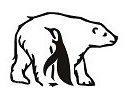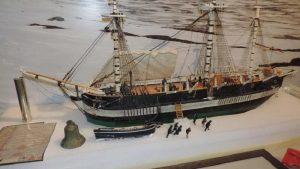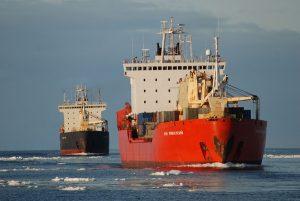
Dangers to whales
Looking at bottlenose dolphins frolicking in the Black Sea or humpback whales merrily slapping their tails on the water in the photo, it’s hard to imagine how much trouble these animals are waiting for. It would seem that what could threaten such giants since whalers were forbidden to kill them? As it turns out, a lot.
First of all, animals are affected by climate change. Scientists believe that this factor is associated with the appearance of “red tides”, harmful to marine mammals. This is the name of harmful algal blooms, which begin to secrete all kinds of toxic substances — in particular, neurotoxins such as brevetoxin, gymnodimine, etc.
— Toxic algae-dinoflagellates (unicellular organisms. — Editor’s note) develop against the background of certain hydrological conditions: they need warm water, certain currents, etc., — explains Dmitry Glazov, Deputy head of the Belukha — White Whale program at the Severtsov Institute of Ecology and Evolution of the Russian Academy of Sciences. — These algae become food for the whales themselves or for the fish that some species of these mammals feed on, which can seriously harm them, even lead to death.
Due to climate change, those whale species that depend on the ice cover, such as beluga whales or narwhals, are also suffering. The whole way of life of the latter is literally “tied” to the ice — they hide under it, eat fish living in the ice. The situation is similar with bowhead whales, whose second name is “polar”, since they spend their entire lives exclusively in Arctic and subarctic waters (the southernmost herd lives in the Sea of Okhotsk). And if other species of whales come to the north for feeding, and they prefer to breed babies in the southern temperate seas, Greenland whales never change cold waters. It is obvious that the melting of the Arctic ice does not affect them in the best way.
However, more “thermophilic” whales are expanding their range as a result of the same changes — gray whales have been spotted far from their usual habitats near Africa and off the coast of Israel, minke whales follow shoals of fish exploring new regions in the Barents and Kara Seas. But still, in general, the situation worries specialists.
— Climate change leads to chronic stress of animals, which means that their hormonal background changes, as well as their immune status, — says Denis Litovka, director of the ANO “Chukchi Arctic Scientific Center”, Candidate of Biological Sciences. — At the moment, we are just conducting research on this topic, unfortunately, there is not enough data yet to draw any conclusions, since we launched the project not so long ago. The environment is not changing in the direction of improvement, this is already the result of human activity. Ocean pollution directly affects cetaceans.
The impact on the life of whales is quite diverse. First of all, we are talking about pollution — this includes microplastics, which has turned into a real ocean disease, and heavy metals, and toxic organic substances that enter the body of animals, are no longer removed from there and negatively affect them.
— Studies of foreign colleagues have shown that toxic organic matter destroys males more often, for example killer whales, — Dmitry Glazov notes. — The fact is that the females feed the cubs, so they have a fairly intensive exchange of fatty tissues. Males accumulate fat, where toxic organic substances accumulate, and so they live with them. As a result, whales lose their ability to reproduce, die earlier than females, etc.
We must not forget about such a phenomenon as acoustic pollution. During seismic exploration in the Arctic and in the seas of the Far East, however, special programs were carried out to minimize the sound effects on animals, but it was not possible to completely remove the problem. The noise in the ocean is created by echo sounders, ships, industrial work — for example, piling, etc. Taking into account the fact that hearing plays an important role in the life of whales — animals use it not only for communication, but also for finding food — it is unclear whether they will be able to adapt to the situation or will suffer.
It also happens that whales die in nets that are not placed on them at all.
— In Alaska, they are very happy that bowhead whales have returned, but they are also sounding the alarm, — comments Denis Litovka. — They suffer greatly from fishing traps and orders (a special way of setting nets. — Ed.). Can you imagine this colossus weighing up to 120 tons, which flies into the network at speed? After that, as a rule, it dies. To avoid this, you need to stop setting orders, but for this you will have to give up catching seafood, for example, such a delicacy as fresh crabs, and people are not ready for this.
— Not far from the Shantar Islands last year, our colleagues met a bowhead whale with a net stuck in its mouth, — Dmitry Glazov echoes. — They wanted to help him, it was about organizing a rescue expedition and freeing the animal, but they could not find him again — apparently, the whale died. Similar dangers lie in wait for killer whales, who are not averse to eating halibut on orders, and as a result, they themselves can get entangled, winding them on themselves, and bottlenose dolphins, which are often caught in fishing nets in the Black Sea. How to solve the problem is still unclear.
There are few difficulties on the part of the climate and humans, so whales still have to fear predatory relatives.
— Our colleagues in the Sea of Okhotsk made a discovery that did not please us, — admits Dmitry Glazov. — Carnivorous killer whales have learned to get the young of bowhead whales, which are not too many anyway. This has never happened before. But gradually, researchers began to note isolated cases of attacks, and then it came to regular attacks.
With the help of a quadrocopter, it was recorded that adult killer whales not only produce whales themselves, but also teach their young people this, one can say they come to eat in the habitats of bowhead whales. The latter, however, also learn to save themselves — for example, they walk in shallow water, huddle to the coast, where it is difficult for killer whales to get them. Time will tell — maybe they will learn to defend themselves from predators.
Difficulties for people

Not only killer whales feed on whales, but also the indigenous peoples of the North. The latter receive a quota for the extraction of marine mammals, without which they simply cannot live. So the problems of whales directly become the problems of people.
— Some individuals of gray whales emit a characteristic “medical” smell, — says Dmitry Glazov. — It was discovered, in particular, after people who ate the meat of these mammals were poisoned. Now the Chukchi are trying not to hunt “smelly” whales, since the aroma is strong enough and can be heard even over the water. But if it still happens to get such a thing, the Chukchi cannot eat it, so now there is a question of not including them in the quota.
The problem lies in toxic chemical compounds. Why the whale itself is not poisoned by them is not very clear. Some scientists suggest that he simply accumulates them in himself, but they do not participate in metabolism. At the same time, getting into the human body, these toxins have the most negative effect on it.
— In 2018, at the meeting of the International Whaling Commission, which was held in Brazil, in Florianopolis, the Russian Federation undertook to determine the cause of this phenomenon by 2025, — Denis Litovka reveals the details. — In 2022, we conducted relevant research and identified the substance responsible for the unpleasant smell and taste. It turned out to be 2,6‑dibromophenol, the concentration of which in the tissues of “smelly” individuals was 500-590 times higher than in “normal” whales.
We also found out how this organic compound gets into their body. It is produced by one of the main feeding objects of gray whales — polychaetes (polychaete annelids), it is a repelling biotoxin that serves them to protect them from predators. So anthropogenic influence has nothing to do with it, the substance is exclusively of natural origin. In January 2023, an article on this topic was published in the journal “Chemosphere”. However, scientific work continues: now we plan to study more deeply the various feeding areas of the coastal waters of Chukotka and to examine and compare in more detail the contents of the stomachs of the extracted “normal” and “smelly” gray whales.
What to do to rectify the situation, however, is still unclear. However, where we are talking about whales, there are more than enough difficulties in general. Even counting them is an extremely difficult story. And it is necessary to count, because before, for example, allocating quotas for extraction by indigenous peoples or developing environmental measures, it is necessary to understand how many of a particular species live in a given water area.
— We can’t count the animals by their heads — we can’t, for example, drain the White Sea for this, — Dmitry Glazov notes. — Universal mathematical methods are used to do this with a sufficient degree of accuracy. But in order for them to work, it is necessary to take into account many factors: the time of year, weather conditions, the trajectory of the ship or aircraft, etc.
For example, a few years ago, with the grant support of the Russian Geographical Society, we counted belugas in the White and Okhotsk Seas. First of all, it was necessary to choose the period of the year when the animals are inactive in the water area. Then we had to think through the logistics, to understand which airports we should fly from. To figure out which tacks we can fly over the water to clearly see the belugas, and at what altitude it is better to do it. Evaluate the weather forecast — the water should be fairly clear. This is important, in particular, when we count females with babies, because the cubs usually hide under the tail of the mother and it is not so easy to see them.
Since there is not enough strength, money, or time to fly around the entire area of the sea, they count the animals in a certain area and, based on the results obtained, estimate their total number. But here lies the catch: whales will not be evenly distributed over the entire surface of the water. This means that there will be more of them in some areas, and less in some.
And if you count them in a “densely populated” area, and then thoughtlessly apply the resulting figure to the entire area of the sea, you can “discover” much more whales than there are in reality. And as a result, to issue too large a quota for withdrawal, which will undermine the population. To avoid this, scientists use the so-called precautionary approach, somewhat underestimating the figure. To make it as close to the truth as possible, certain calculation coefficients, knowledge of biology and common sense are used.
Another difficult task is to put a satellite tag on the whale to trace its migration routes, to understand where and how much time it spends. There are two ways here. The first is to get close to the beast by water or by air and with the help of a special air rifle or crossbow to install it on the animal’s back. The thickness of the fat allows you to do this almost painlessly — for example, in a bowhead whale, the thickness of the fat layer reaches 40 cm.
The disadvantage of the sensors installed in this way is that they are not too durable — they last only three months, then they fall off. In order to fix the tag for a longer time, the whale must be caught, and this is very difficult and even dangerous for both the whale and the human
— We applied this method to belugas in the Sea of Okhotsk or bottlenose dolphins in the Black Sea, — Dmitry Glazov shares. — This is a rather complicated process. But this way we can fix the “earring” sensor on the dorsal ridge, this label will be held for one and a half to two years, so the value and volume of the data obtained are noticeably increasing.
The sensor is always placed only on the back — the pectoral fins and tail blade almost always remain under water, from where no signal will be sent to the satellite. It goes away in a split second while the dorsal crest with the tag and its antenna appear above the surface.
Translation difficulties

Understanding whales is not an easy task, but it is very tempting. On the one hand, their way of life is so far from human that it would hardly occur to draw any analogies. On the other hand, all mammals on Earth act according to the same biological program: to survive, to eat, to continue the race. And sometimes the behavior of animals is not so much different from the behavior of people.
— In the early 2000s, I worked on the Black Sea, studied bottlenose dolphins, – Dmitry Glazov recalls. — At that time there were a lot of pilengas (a type of mullet introduced into the Black Sea from the Russian Far East in the 80s of the last century). Once I noticed a dolphin that was moving very strangely, as if waddling, barely. Looking closer, I realized what was the matter — the bottlenose dolphin simply ate too much fish. There was a pilengas sticking out of her mouth, which she clearly no longer had the strength to swallow, and she also managed to swim with great difficulty. It’s like a man who fell off the table after a hearty lunch and can’t move.
A separate intrigue is the language of whales. Scientists have been struggling for decades, hoping to decipher it, but it is almost impossible to unambiguously correlate what is happening underwater at the moment when one or another “fragment of speech” sounds on the audio recording. The only thing that can be understood by “peeping” through the water column is whether the whale is feeding at the moment or not, swimming or not. All other nuances of private life, as a rule, are securely hidden. Nevertheless, the researchers do not give up, record the “whale songs” and continue trying to decipher them.
— We managed to find out that each bottlenose dolphin, for example, emits its own unique sound signal — the so—called autograph, – says Dmitry Glazov. — With its help, the dolphin communicates about itself and communicates with another animal. But it is impossible to get to the bottom of the meaning of the “phrases” exchanged by cetaceans. So for now, most of the work with the language is descriptive. Attempts to analyze the communications of cetaceans, drawing analogies with human language, did not bring results, apparently, some other principle is used there. Perhaps, over time, it will be possible to sort this out.
Let’s hope that over time it will be possible to deal with other tasks, in particular with anthropogenic impact, which poses a threat to whales. The Ministry of Natural Resources is discussing draft strategies for the conservation of hunting sea populations of bowhead and gray whales, which are included in the list of rare and endangered animals. Perhaps, after this document is adopted at the legislative level, it will be possible to study the life of the largest marine mammals, and subsequently to facilitate at least partially.
By Olga Ladygina


